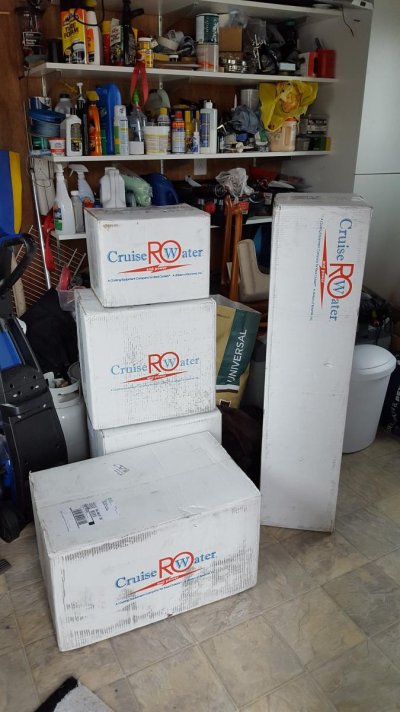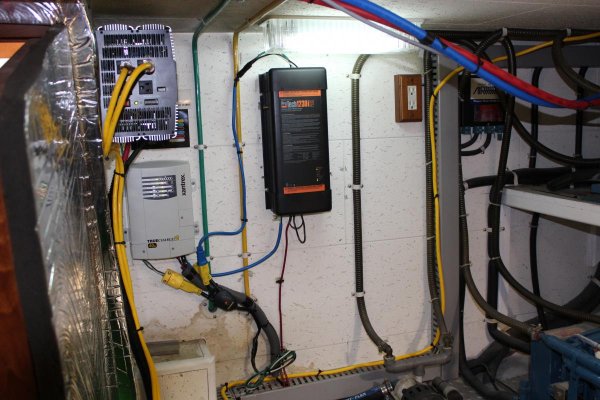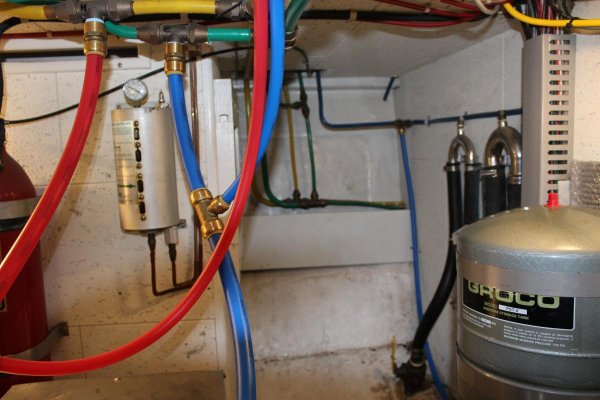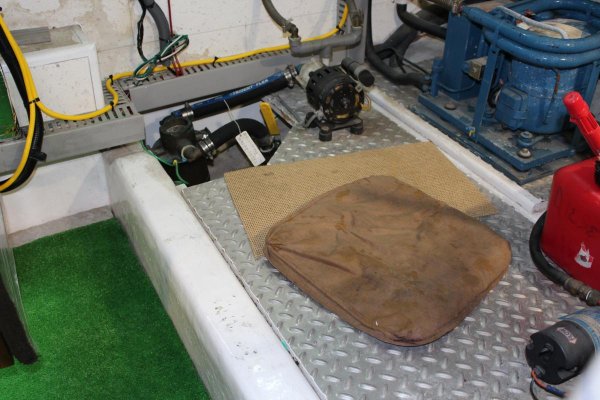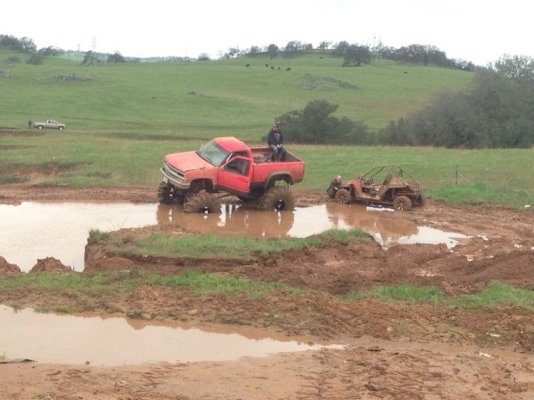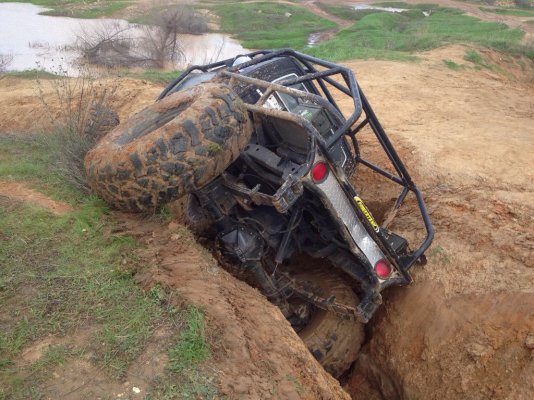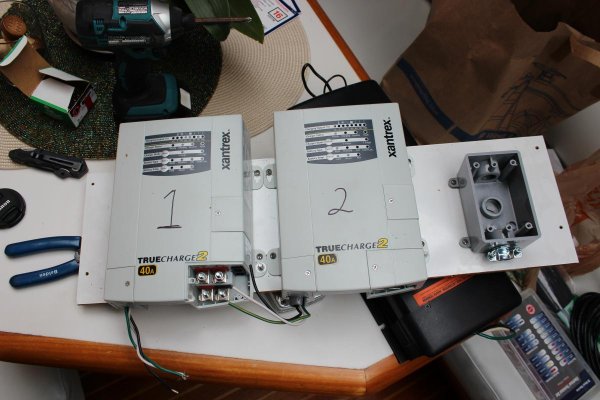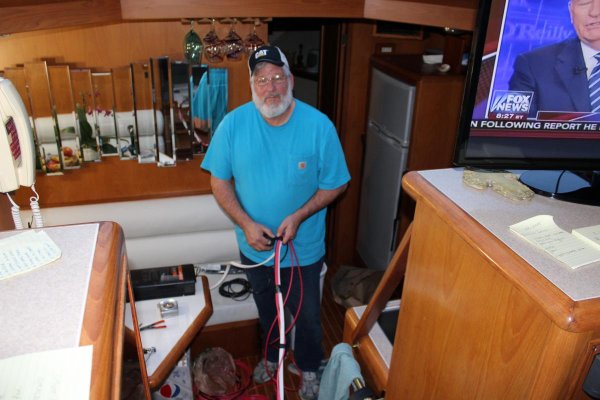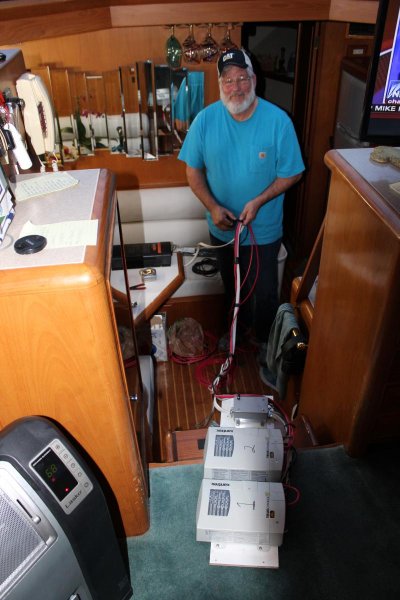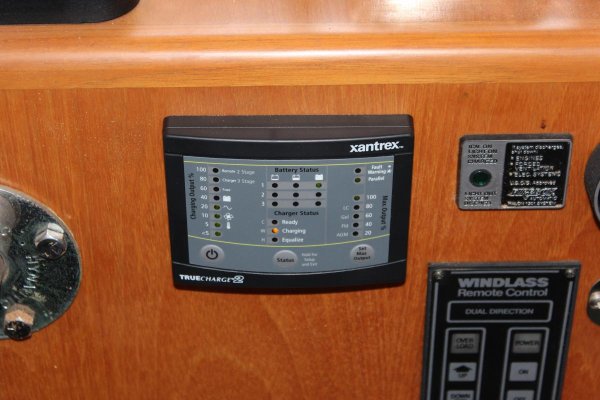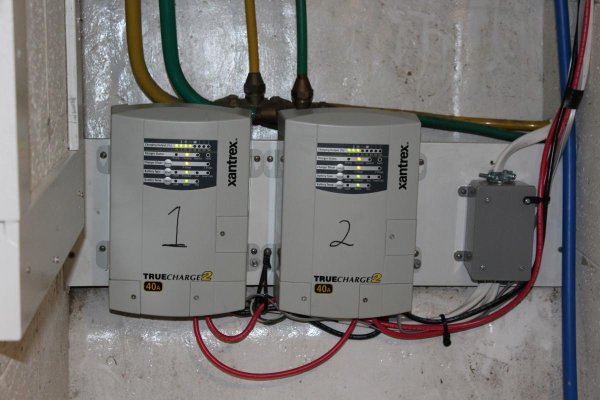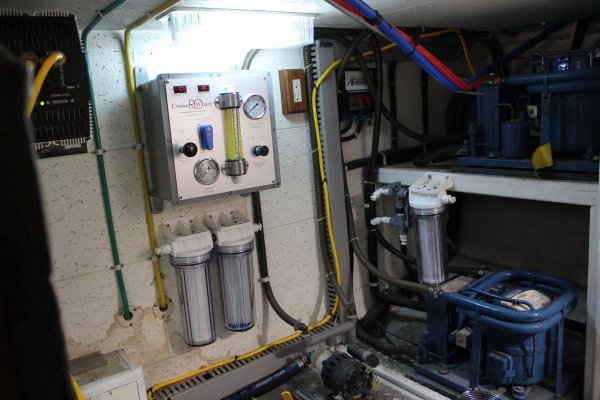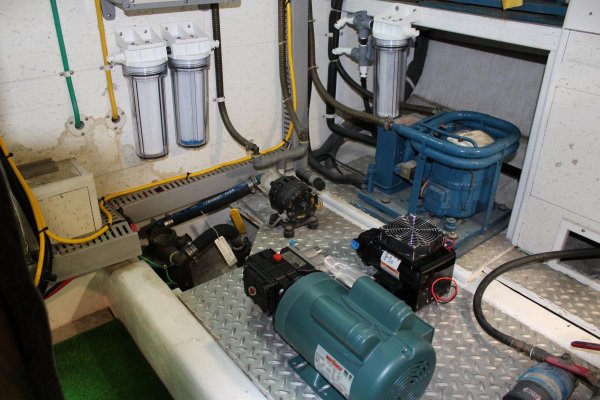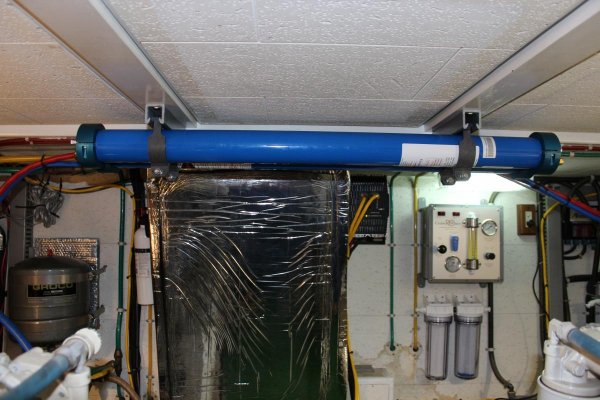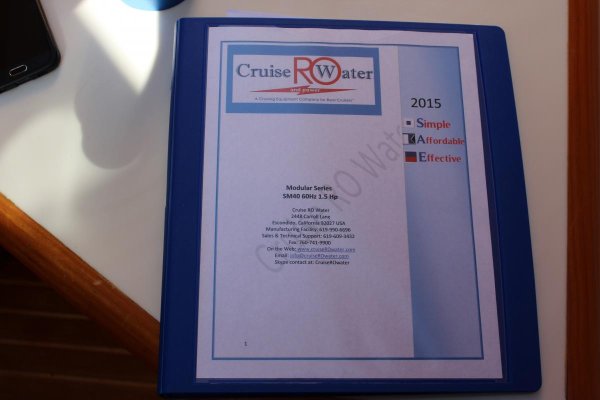Hi Alaskan Sea-Duction,
I installed a Cruise RO Watermaker aboard my Pacific Trawler 40 about a year ago. Some lessons learned during my install, and subsequent year's use:
a. The supplied fittings (quoting from the manual) "...polypropylene G.A. Murdock fittings." Good stuff, but they do leak if not properly seated. While spares are provided with the kit to ease the installation, be advised that EVERY installation of this watermaker is, by definition, a custom install. In other words, the fittings supplied may, or may not work for your particular needs. And, G.A. Murdock does not sell replacement fittings retail-they must be procured from one of their retailers. None of which I could find in the PNW, nor on-line by the way. During my install, I was forced to obtain replacement fittings from Cruise RO. While they were reasonably responsive to my needs, the latency and cost of the fittings was galling.
b. Rick, the salesman for Cruise RO, is responsive and fairly knowledgeable. An engineer he is not. Questions regarding boost pump selection, for instance, were brushed off with statements like "...we've got about 20 different pumps on the shop floor that failed our testing. Ours is the best." Given that the provided pump is NOT continuous duty, inquiries to replace it with a simple centrifugal pump, mounted below the water line, obviating all the bypass and fan cooling who-rah associated with protecting the Jabsco in this application were poo-pooed by Cruise RO. And their engineer, who operates (I think) somewhere in San Diego County, was not made available to answer my (perhaps) low-level questions.
c. After operating in AK waters last summer, I came to the immediate conclusion that the pre-filters are simply too small. I operated my watermaker about twice-weekly, and found that I needed to replace both pre-filters about every three weeks. PNW waters are significantly bio-fouled, so the filters plug often. Choosing a mounting location for the filters that will allow inspection every time the watermaker is used and being able to drain and replace the filters easily and often is important. Carry lots of spares!
d. Depending on how often you use your watermaker, it can take upwards of 5 gallons of sample water to finally see good, salt-free, aurally clear water ready to put aboard. In addition, the provided block diagram makes no mention of, nor provision for dumping the sample water overboard while you wait for the hydrogen sulphide (for instance, a product of bio fouling in the pre-filters) to dissipate. A bucket works, as does dumping the sample water into the bilge, but not terribly convenient in my case. Some re-plumbing required here, IMHO.
e. The usual admonitions about operation in foul water apply. Personally, I'm not too concerned about petroleum contamination, as long as the raw water intake is significantly below the waterline. And while the RO process hypothetically removes bacterial and viral organisms from the treated water, there's REAL good reason not to locate the raw water intake for the watermaker downstream of the holding tank effluent, nor operate in suspected contaminated water! I don't want to hijack your thread, but YMMV regarding how much you trust your watermaker to provide you with healthy drinking water. Having experienced medical issues related to both viral and bacterial infections, caution is definitely in order during operation.
f. After surveying your desired installation, I highly recommend re-drawing the supplied system block diagram to fit your particulars, and studying it intensely before mounting and plumbing your hardware. Cruise RO is pretty good at reviewing your potential install, and making valuable suggestions that will reduce the re-work necessary post-installation.
g. The Cruise RO watermaker is definitely a manual system. Expect to tweak and twirl with it every time you operate. Fortunately, this is facilitated by the design (mostly), and most certainly by your installation decisions. It's one of the virtues (and shortcomings) of the system, depending on each and every owner/operator/installer/user. Neither my wife nor I care to practice bleeding before boating, and everything's' a compromise, but I won't leave home without my watermaker, despite swearing at it daily during the install, and often during operation.
h. And finally, I made a personal choice to replace about 75% of the plastic fittings and tubing with simple bronze barb fittings and reinforced vinyl tubing and hose clamps. I had to revise the plumbing anyway, and I don't have storage for the spares needed to repair and service the Murdock "stuff" underway. Typical barb fittings and hose are available everywhere. Again, YMMV.
Regards,
Pete

